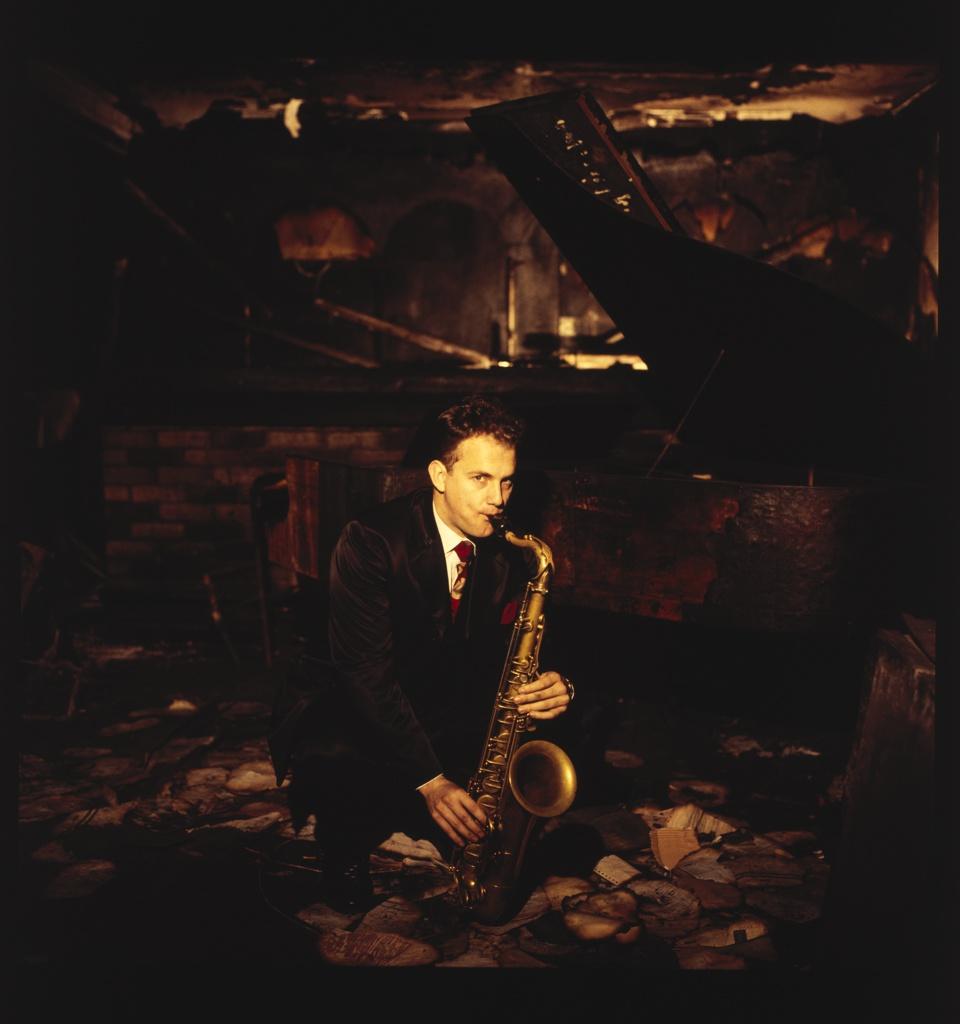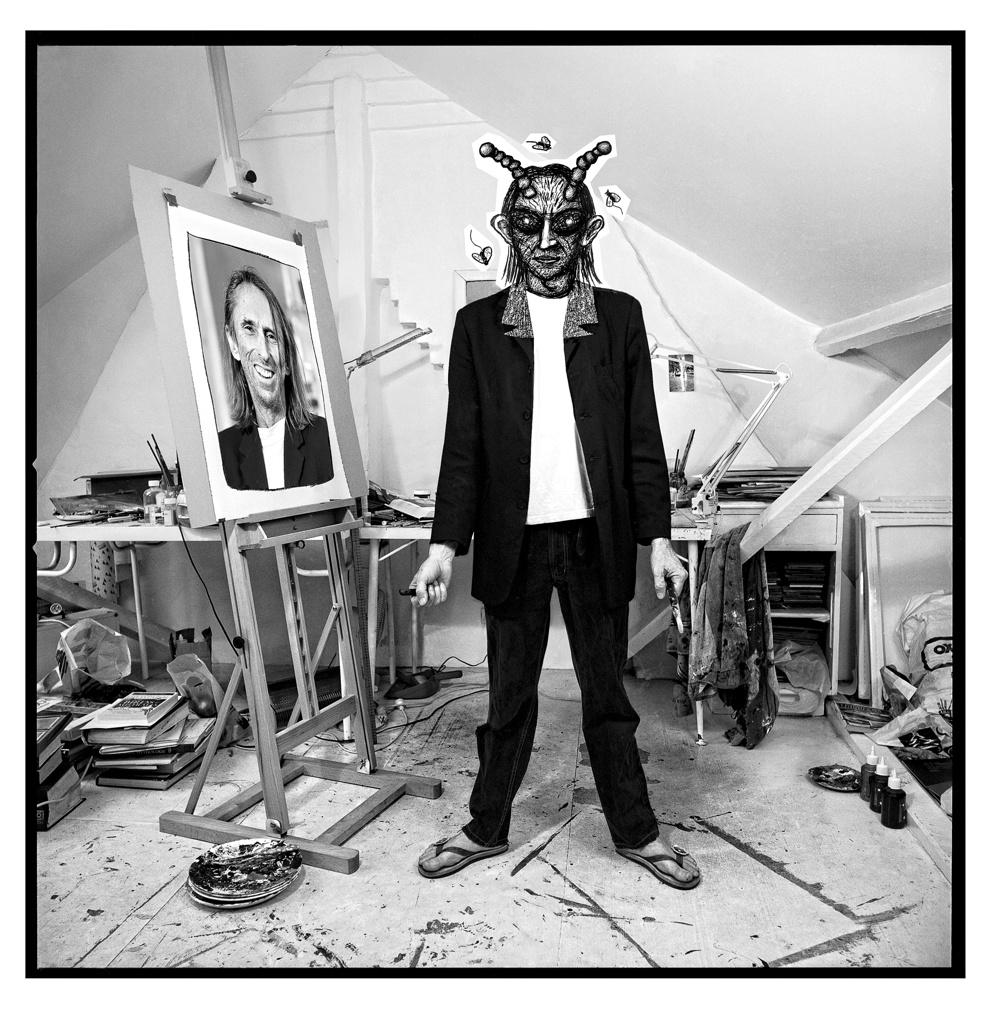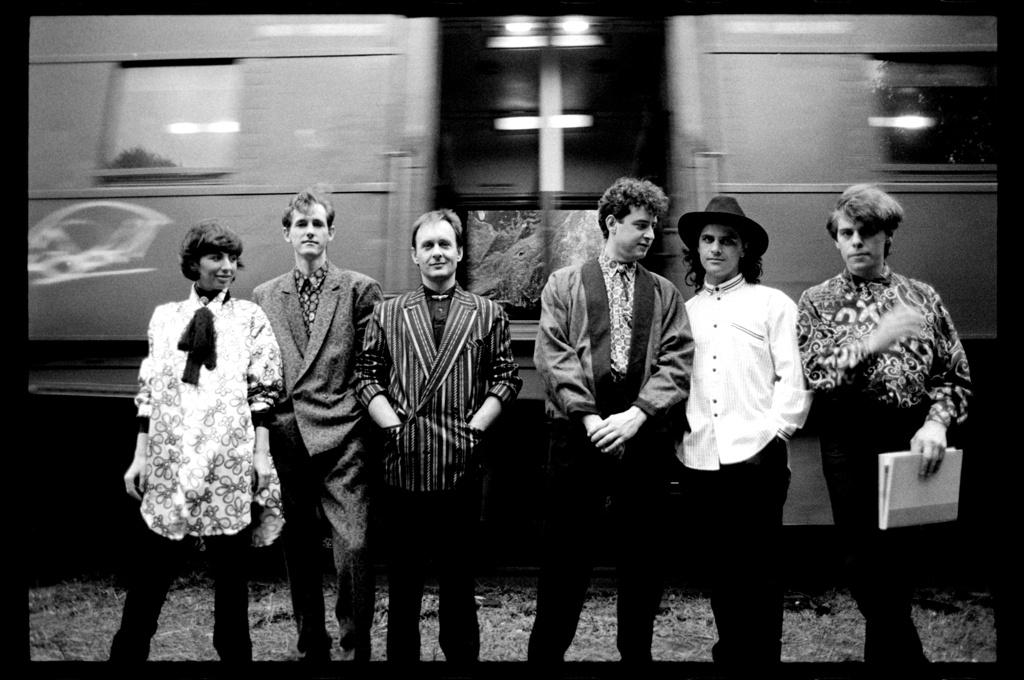Q&A with photographer Wendy McDougall
How did you get started in the music scene? What was your big break?
My love of music and art/photography made the choice of what I wanted to do easy. It was a very naive thought in hindsight, but I decided I had to like what I did rather than work just for the money otherwise I would never be happy. I also felt like I wasn’t smart enough for ‘regular’ jobs or to go to uni. I left school before the end of year 12 to work in a photo lab whilst shooting bands at night. The first break came when I sold my first photo to the Australian band The Angels in 1979.
At what point did you think, I can make a living as a music photographer?
My first break planted the seed, but the real moment was probably when I became the Sydney contributor for a music magazine which offered me enough work, coupled with the new contacts I was building up, to be full-time freelancer.
What’s the most interesting story behind one or two of the images on display in Amaze?
Every photo has a story. One I simply love and feel proud of is the portrait of Reg Mombassa. I told him of my idea for a big photo portrait competition and that I wanted to add one of his self-portraits to the mix so it would be ‘Reg drawing Reg’ and he happily agreed to create something just for my picture. He actually made three self-portrait drawings, an evolution series, from real to surreal, and I chose the one you see in my image because it made me laugh and seemed to represent his humour the best — which I love. Reg’s studio is in his attic so I hauled my camera gear up the ladder, no easy feat, and went about creating all the jigsaw pieces.
From the very start of my career I’ve often taken my work to new levels by hand colouring, cutting and pasting, or by other means of creative effects, all done by hand. This photo of Reg was also made during my transition from analogue to digital, something that didn’t come easily for me, so this image also showed me that not all was lost with my love of creating artworks beyond the frame of a photograph. Sometimes I really miss the darkroom and the hands on moments it offers, but with results like this image I’m grateful that the medium offered me new ways forward. Digital is an ongoing love-hate relationship for me, but I do feel pretty confident with my Photoshop skills if nothing else! I don’t miss the smell of chemicals though!
The photographs of GANGgajang and Tim Hopkins would more than likely be unachievable these days as they both were taken in high-risk situations. GANGgajang on railway tracks, and Tim in a burnt-out hotel. Workplace safety wouldn’t allow these or many other shoots I did during the 80s and 90s. In hindsight we had a great run during that time, letting our imaginations run wild and using real places that are now off the table. Even shooting on the Sydney Harbour Bridge, a fave location of mine, is off limits these days.
Best ‘pinch yourself’ or ‘eye-opening’ moment in your career?
A ‘pinch’ moment was when I had the opportunity to photograph Tom Jones for Triple J in 1990. Having been brought up listening to his songs because my mum was a huge fan, I felt the joy for her sake! Though I only had a few moments with him, and he had just spent a day in promo mode, he was extremely charming and even agreed to pose with me in a polaroid so I could show mum.
Was it hard carving out a niche in such a male dominated industry?
As a teenager, one of my influences was American photographer Annie Leibovitz. I told myself ‘she is a girl taking music photos, so I can do it too’, and for a very long time that was the last I thought about gender because I was too busy learning my craft, mainly on the job!
By the last half of the 80s the main focus became telling the music industry that what I was doing was actually a real job. Together with some of the only other photographers around at the time in this area — Tony Mott, Bob King, Adrienne Overall and Chrystene Carroll — we banded together to publish a book of our work, Still Noise, to convince the industry of our worth and that we were serious. So that meant I was working with both genders, not fighting the opposite.
Eventually, some dominating characters and companies, and yes, they were male driven, made my working life in the music industry really painful. You had to play the game their way, despite the copyright laws. But the good that came from the decision to open my eyes to creative areas other than music was that I embraced the world of theatre, then film. This was around the mid-90s, but my music photography never went away because the musicians I photographed were never an issue for me, so I continue to this day to work with those who still seek my creative ideas.
What has been the best decade so far for music photography and why?
I loved the 80s because it was first decade of my career and I was living my dream. There was freedom to let your imagination run wild, shoot the entire gig if you were working at live shows, and I loved to work with the canvas of a 12-inch record sleeve.
Perhaps I would have liked to have had more knowledge and wisdom during that time to make some better choices — artistic and business — but my artistic results during that time, whether they are my best work or not, hold great memories and were the start of wonderful creative and friend relationships that exist to this day.
Newer photographers these days, I would imagine, would love their own eras for sure and that is perfectly understandable. Ultimately I think it’s down to actual experiences of your own work than the decade, if its good or not. Perhaps you have to work for four decades before you even see a good one? We often want what we don’t have, and I think the 70s looked pretty cool — Annie Lebovitz, Linda McCartney, Mick Rock — out there with what seemed like even fewer restrictions than I had to get the pictures.
How have you adapted your approach with the changing music scene and decline in live music venues?
My approach to life in general is that you make your own luck.
As mentioned, I felt the need to move away from being exclusive to just the music scene after about 15 years of working in the industry. I still felt the need to be creative so I was actually expanding horizons. With a new-found interest I just had to learn what theatre was all about (on the job again), because ‘story’ is everything in these other sectors. It made me realise how much I already knew without knowing about ‘story’ as such, but I also really loved theatrics and being entertained. I always hope my work entertains and says something of the people I photograph. I also learnt how to work better with a team too, and after a while could see why bands used to fall apart, because they were not trained to work as a team like those in theatre.
Theatre will always hold a spot in my heart. Even though I ended up working with many great theatre companies over the years (Bell Shakespeare, Griffin, Sydney Theatre Co, Riverside Theatre, Tamarama Rock Surfers etc), I was attached to just one company for 25 years — Pork Chop Productions, run by actor/director/writer Jeremy Sims. We went on to make films too. I have a wonderful visual history of an independent company that one day I hope to share with the world. One reason I enjoy working with Jeremy is his love and understanding of music. It is very important and pure joy to him on a personal level and therefore an important component in all our productions. I’ve been able to extend my reach to some musicians who were strangely unavailable to me when working directly in music, such as Ed Kuepper who wrote the music for our production Last Cab To Darwin. So music has always remained in my life, just not always front row at a sweaty venue!
Your book ‘it’s only rock ’n’ roll but I like it…’ showcases your ‘greatest hits’ over a 40-year career. What are you most proud of?
Perhaps without realising the significance at the time, I was a small cog in the wheel that helped create and document one of the greatest times for Australian music. Back then I was swept up in the creative times around me, and doing what I loved. I left home before I was 18, so the price of living was obviously accommodating, even though there were times it didn’t feel like that. Ha. The 80s was when Australia was able to say to the world they had actually an industry. It was also the era when music videos began, which gave me experience of working on film sets. This became useful in later years, and those people making music videos back then have now become our film industry giants that we know today — Alex Proyas, Kimble Rendall, Richard Lowenstein, Craig Monahan, and many others.
It’s taken my retrospective exhibition and self-published book to realise this point of view, especially when I saw people almost crying while looking at my photos because they were reminded of and transported back to their own good days in that era. I feel proud to have been a small part of something greater than all of us, and to be able to share my work.
What has it been like for you working during Covid?
Absolutely terrible.
I had just released my book ‘it’s only rock ’n’ roll but I like it...’ a month or so prior to the first wave, so along with all my planned book events and regular jobs, absolutely everything I had set up was taken off the table. These types of events don’t come back automatically either.After the first wave I started to rebuild, but only managed one event before wave two hit. I am currently biding my time to rebuild again, because of course events require an audience to make them work.
Having said that I did have a few opportunities to supply archival images for display in an exhibition and sold a few pictures to a couple of magazines. The digital world has enabled us to continue to connect and find opportunities. Even this fabulous opportunity with the State Library of NSW has happened because of digital connections and being able to upload files. I’m thrilled and grateful for this, it’s part of the ‘love’ side of the digital world. But to create content you need to be face to face so that side of my world is still on hold.
What are you working on right now?
With so many years of experience under my belt I’d like to contribute to the next wave of photographers by sharing my knowledge, so have been working on ways to do that, such as offering workshops or consultations for either photography or how to stage exhibitions etc. I may not have all the answers but I feel I have useful information to share that can be adapted to suit anyone.
I’ve always kept a hand in at making art too — either photo-based images or drawing and painting too, so with no work on, I turn to these creative outlets.
I continue to submit to photo exhibitions and/or competitions, as they keep your creative mind alive. Currently I have work in a group show in Geelong in Victoria titled See The Music, and am a finalist in the upcoming annual Blue Mountains Portrait exhibition in Katoomba which runs from 22 January to 20 March 2022.
My book is available for sale too — via my own website. Being self-published means I continue to monitor sales and seek promotional opportunities.
You can also purchase Wendy's prints from the Library Shop.


